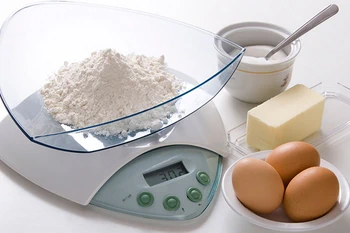General
Most countries use the metric system:- Grams and multiples for solids (e.g. 125 grams or g of flour)
- Milliliters and multiples for liquids (200 milliliters or ml of milk, for example)
- Degrees Celsius for temperatures (e.g. 180°C)
- Ingredients are expressed only by volume, not by weight
- Volumes are expressed in cups, spoons or teaspoons (5 ml)
- Temperatures are expressed in degrees Fahrenheit
Then things get complicated, because cups and spoons have different values in different countries
 |  |  | |
|---|---|---|---|
| Spoon | 15 ml | 15 ml | 20 ml |
| Cup | 240 ml | 285 ml | 250 ml |
Source: Wikipedia
On this site
To be useful to as many people as possible, here is what happens on this website:
- All liquid ingredients are by volume, in millilitres
- All others ingredients are by weight, in grams
- All volumes and weights can be converted from metric to imperial (and vice-versa) in a single click
- This conversion can be made to US, British and Australian measures
- All temperatures are given in both Celsius and Fahrenheit degrees
Some conversion tips
With liquids (water, milk, etc.) volume is generally equal to weight, which means for example that 50 ml water = 50 g water.
You will often find on packaged goods, volumes stated in centilitres (cl). Typically a pot of cream 20 cl.
- As 1 cl = 10 ml, your pot of cream contains 200 ml.
- Divide ml by 10 to get cl. For example: 300 ml milk / 10 = 30 cl milk
- Multiply cl by 10 to get ml. For example: 5 cl whisky x 10 = 50 ml whisky
My best advice
In spite of all these explanations, I strongly advise you to weigh everything: liquid or dry ingredients. It's the best way to be precise, to avoid errors in proportions, and to be sure of success. This is particulary true for cakes, pastries and bread which need absolute precision.So make friends with your weighing scales.
Changing quantities
Each recipe on this site is available with its original quantities, but can be changed with one click to get:- 3 times initial quantities
- Twice initial quantities
- Initial quantities (to get back to original recipe)
- Half initial quantities
- Third initial quantities, wherever possible
Take care, as in recalculating new quantities some errors may occur when dividing small values (half an egg for example). Don't hesitate to contact me, see link in top of page, if you find an error.





